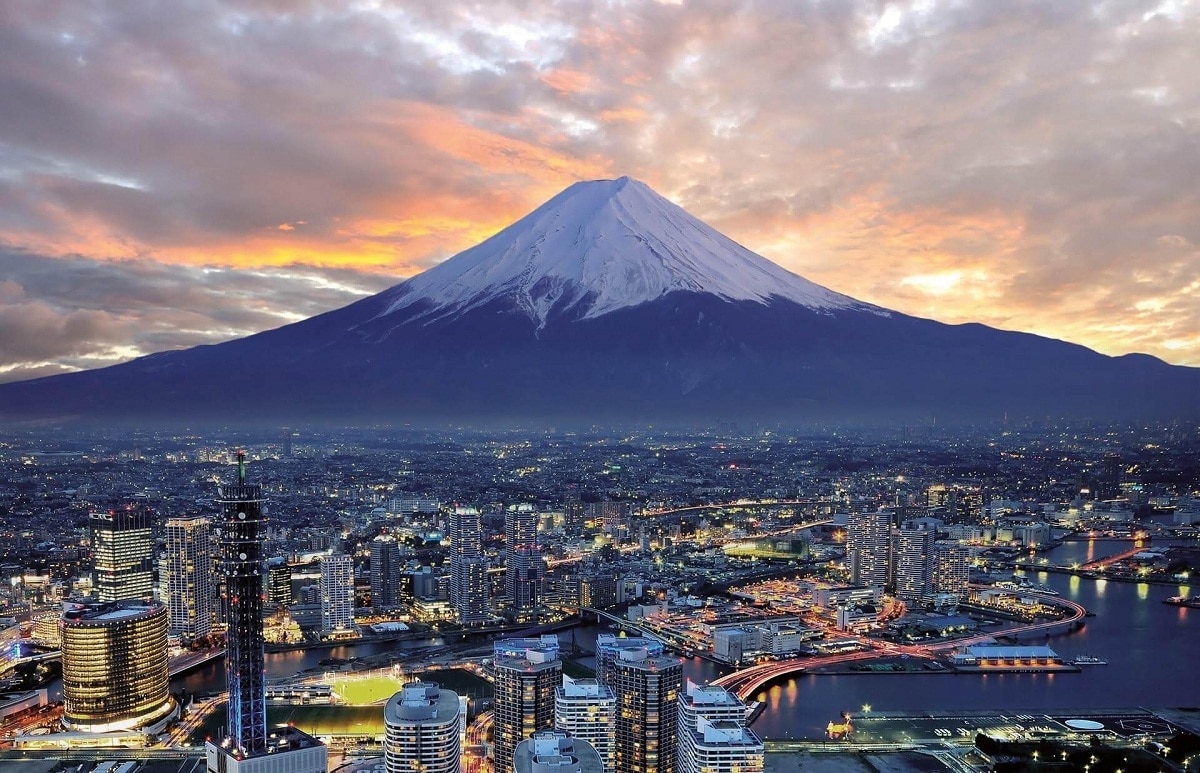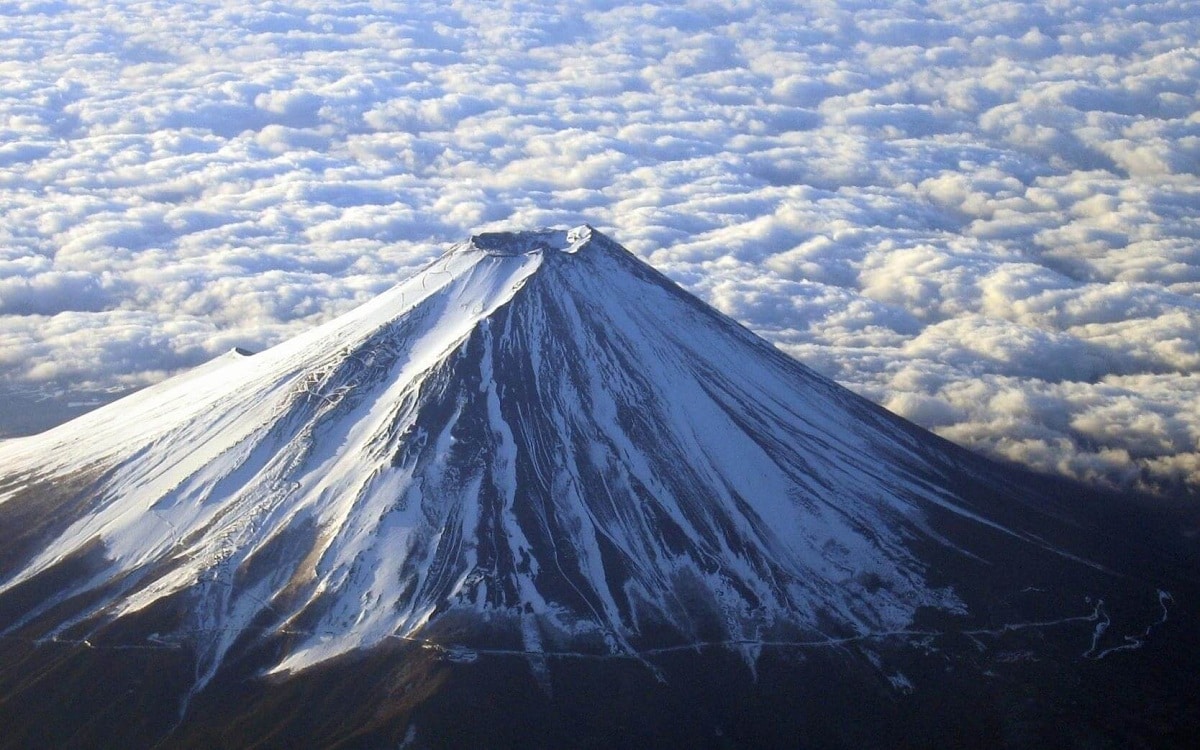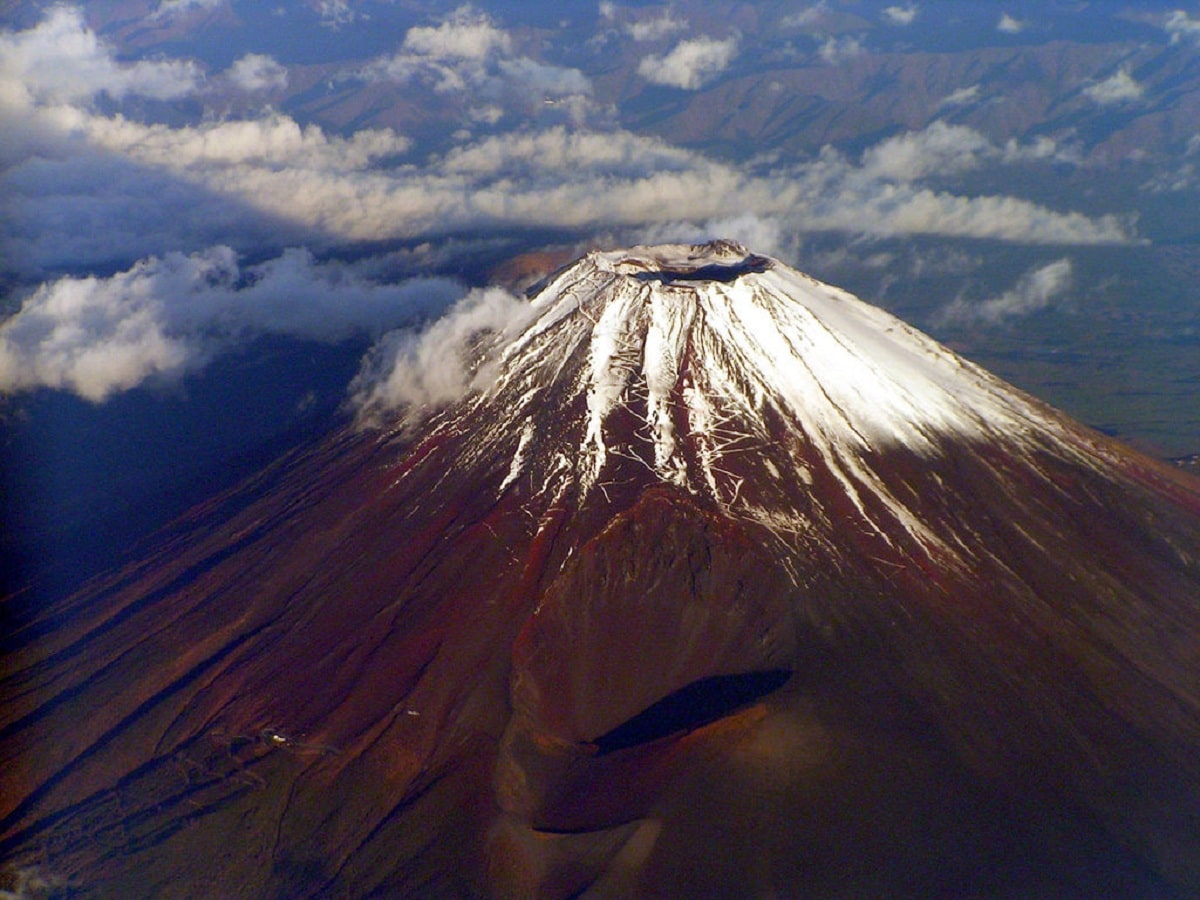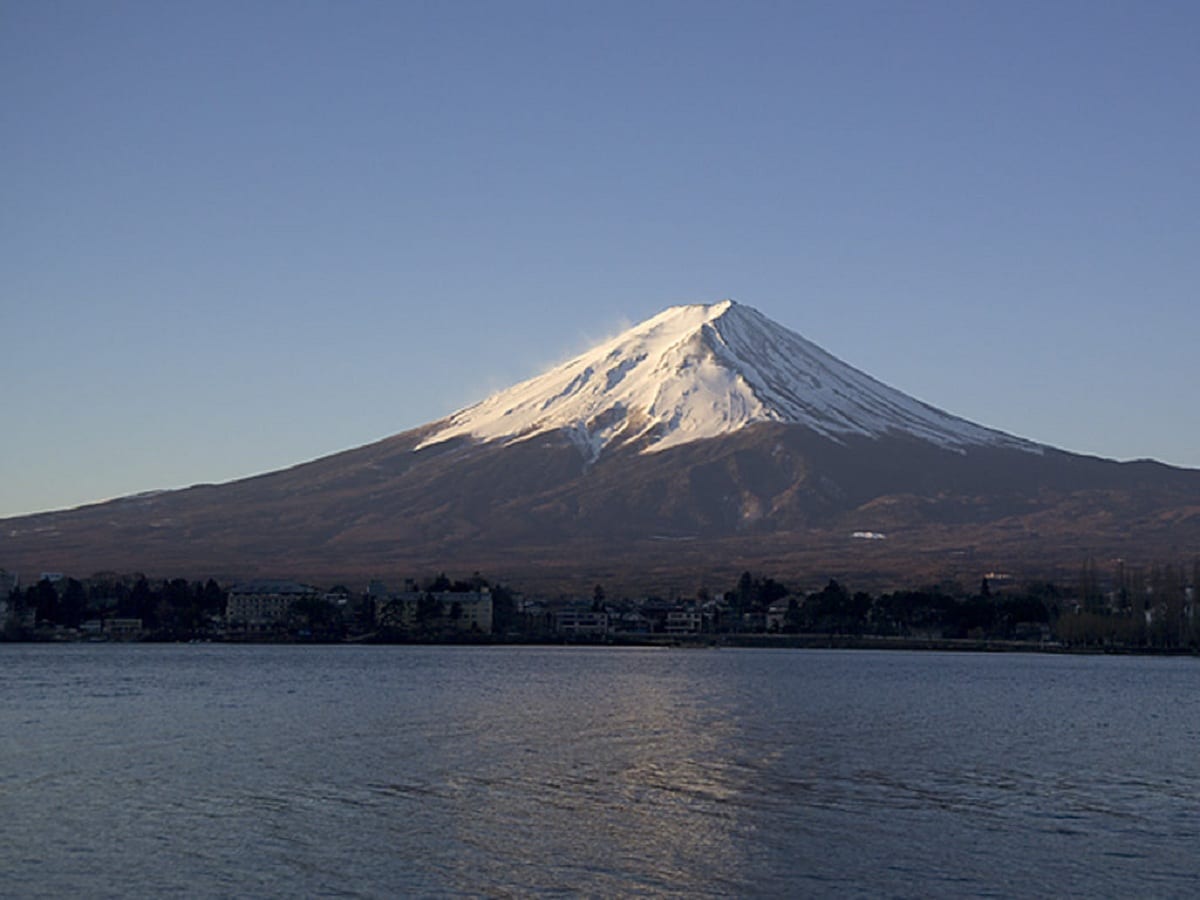
Surely you have ever seen in one of the Japanese animated series of the Mount Fuji. It is the most famous volcano in all of Japan and is located in Shizuoka prefecture on the island of Honshu. The full name in Japanese is Fuji-san although it is also called by other names such as Fujisan, Fuji-no-Yama, Fuji-no-Takane and Huzi, among others. Throughout history it has been known as one of the most beautiful volcanoes in the world, this has caused it to be a symbol of Japan.
In this article we are going to tell you all the characteristics, geology and curiosities of Mount Fuji.
Key features

It is one of the most famous volcanoes in the world and has been a recurring theme of traditional Japanese art. The entire western country is identified with Mount Fuji. The highest peak reaches 3.375 meters and it is listed by common active volcano geologists. This means that it continues to show signs of volcanic activity continuously and it means that it has erupted for the last 10.000 years. Although this seems typical of an active volcano, geologically speaking it is.
And it is that an active volcano is analyzed from the period of geological time. This means that eruptions have to be timed on a geological and non-human scale. For a volcano, 100 years is not time at all. In the vicinity of this mountain are the Kawaguchi, Yamanaka, Motosu, Shoji and Sai lakes, and it is also within the Fuji-Hakone-Izu National Park, the most visited in the country.
The morphology of this volcano exhibits in an almost perfect conical shape. The summit we mentioned above has its own climate. This climate is the tundra and registers temperatures that range from -38 degrees to 18 degrees. Throughout the entire cone that is part of the volcano's chimney is the habitat of numerous species of animals and plants. It has a great variety of mammals, reaching 37 species.
Formation of Mount Fuji

It is a composite stratovolcano or volcano that is made up of several layers of rock, ash, and hardened Lada. It is a volcano that has required thousands and thousands of years for its formation as we know it today. It is located between 3 tectonic plates known as the North American, Euro-Asian and Philippine plates. Furthermore, it is also specifically on the Okhotk and Amuria minor plates.
This volcano is attributed more or less an estimated age of about 40.000 years. We can see that it is currently part of a group of overlapping volcanoes. Before Mount Fuji was formed, other volcanoes were already active, such as Ashitaka, Hakone and Komitake Ashitaka, Hakone and Komitake.
After various explosive eruptions that have taken place in a period of about 80.000 years a volcano of about 3.000 meters high was created known as Ko-Fuji. Later, approximately 17.000 years ago, a huge lava flow covered it completely and gradually until forming the Shin-Fuji or New Fuji. All these are the stages through which the mountain has passed as we know it today.
For this reason, we can call the current volcano as a product of volcanic activity from the solicitation of all the layers of materials to expel the previous volcanoes. This leads us to deduce that under the current volcano are the ancient volcanoes that we have mentioned.
Mount Fuji eruptions

The last eruption of this volcano was recorded in 1708. However, this makes it classified as an active volcano since it has a great risk when launching fumaroles and showing signs of seismic activity. According to the Smithsonian Institution's Global Volcanism Program, 58 confirmed eruptions have been recorded and 9 identified of uncertain certainty. This is all the activity that Mount Fuji has had during human records.
During its appearance on this planet it was a very active volcano like the vast majority of them. Almost all volcanoes are active when they are young and their activity ceases or diminishes over the years. After the formation of the new Fuji, there was a period of inactivity until about 5.000 years ago. It is then where the eruptions have stood out for having high intensity or a large amount of lava thrown. For example, one of the recorded eruptions of this volcano took place in the Jogan period in 864. This eruption lasted 10 days during which it was throwing ash and other materials that reached great distances.
If at that time the surrounding population was exponentially smaller, just analyzing the possible damage that it could cause today, makes it a high risk volcano. The risk of a volcano or its dangerousness is not decided only by the types of rashes or its morphology, but for the potential damage it can cause. That is, a volcano can emit a large amount of gravel or gases, but there are no living beings, humans, infrastructures, etc. that it can damage, its danger will be less. For example, a volcano in the middle of the ocean is less dangerous.
The last eruption of Mount Fuji dates back to 1708 and it became known as the eruption of Mount Fuji in today's Hōei era. In this eruption it did not generate lava flows to the outside but it did expel 0.8 kilometers of ash, volcanic bombs and other solid materials that reached Tokyo. This event could be announced thanks to a preceded earthquake that was one of the most intense in the entire history of Japan, ranking second in earthquake intensity after the one that occurred in 2011. Since then, no eruption has been confirmed in this volcano.
Mount Fuji, although considered a risk volcano, is a tourist attraction. I hope that with this information you can learn more about Mount Fuji.